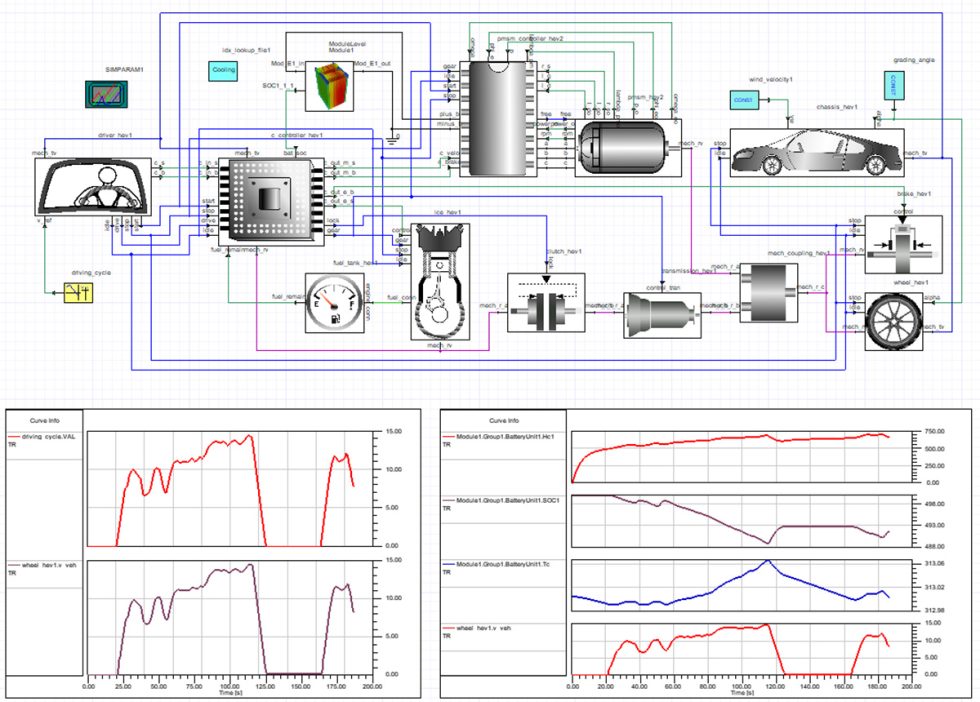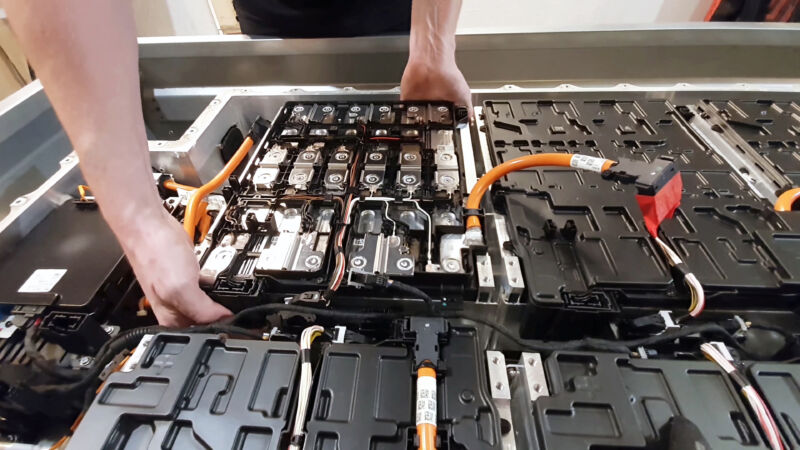It's often said that the easiest way to get people to buy an electric vehicle is to let them test-drive one. But here in the US, EVs only accounted for 3 percent of the 15 million new vehicles sold in 2021. That means there are an awful lot of misconceptions out there when it comes to these newfangled machines.
The top concern is probably range anxiety, a fear that is usually dispelled as someone gets used to waking up to a full battery every morning. I won't dwell on that today, but the next-most common point of confusion about EVs has to be the traction battery's longevity, or potential lack thereof.
It's an understandable concern; many of us are used to using consumer electronic devices powered by rechargable batteries that develop what's known as "memory." The effect is caused by repeatedly charging a cell before it has been fully depleted, resulting in the cell "forgetting" that it can deplete itself further. The lithium-ion cells used by EVs aren't really affected by the memory effect, but they can degrade storage capacity if subjected to too many fast charges or if their thermal management isn't taken seriously.
The Nissan Leaf bears a lot of responsibility for the idea that EV batteries don't last. Nissan eschewed liquid cooling for the Leaf's pack, and the EV first went on sale in model year 2012, so there has been enough time for some early Leafs to lose up to 20 percent of their pack's storage capacity.
Most EVs aren’t the Nissan Leaf
As it turns out, an EV's battery pack is subject to a more stringent warranty than the rest of the car—federal law requires automakers to guarantee packs for eight years, or 100,000 miles (160,000 km), at a minimum. And with the exception of Nissan, every EV on sale today features liquid battery cooling as part of the battery management system.
Tesla has been making EVs for long enough that some of its cars have accumulated massive mileages, providing real-world data on degradation over time. EVs from OEMs that are newer to the electrified end of the market instead have to rely on extensive testing programs to determine if their battery packs have what it takes for the long road.
Some of that testing involves actual cells combined into modules, charging and discharging repeatedly over the course of weeks, months, or even years in temperature-controlled test chambers. But simulation can cut costs and development time.
"Often, if you're testing early on, sometimes you don't even know what you need to test. But simulation can give you some of these insights from a physics standpoint or from design behavior," said Pepi Maksimovic, director of application engineering at Ansys, which provides simulation tools to the automotive industry. "There are four primary modes of failure: thermal failure, mechanical failure—because they shake and vibrate and break soldering and so forth—humidity, and dust; and all those effects can and are being modeled," she told me.
"For example, on one of our clients—the company called A123—they've used Ansys' Twin Builders [a simulation tool] to model their new liquid-cooled 48 V battery pack," Maksimovic told me. "And we specifically relied on simulation to look at the thermal dependency on electrical performance. They also rely on simulation to help them predict battery life as well as assess and calculate a temperature distribution and then figure out the appropriate cooling system they need to design.
"The benefit of using a digital twin and these sorts of modeling is that you can do these system-level simulations very fast—in a matter of seconds," she explained. "And look at all kinds of permutations of 'what if' scenarios—what are people doing, what terrain they're driving on, what's the climate temperature, weather? Are you in Sweden or are you in Kuwait or Arizona? Things like that.
"When you put [powertrain electronics] into a tighter and smaller space, thermal runouts are much more likely to happen, which means now you have cooling issues, etc. So you have all these opposing trade-offs, and reliability of electronics is a huge issue because they're really delicate," Maksimovic said.

"A huge revolution in automotive is just continuing to ramp the number of iterative use cases that you can test against in simulation. You can run thousands [of simulations] a second," said Jeff Phillips, go-to-market director at National Instruments.
For EVs, a lot of that testing means verifying the way electronics behave. "So when you're testing a battery or inverter, all the automakers or tier-one suppliers go through two different phases of tests," Phillips told Ars. "They test what they call 'signal level,' which is when we send a signal to the inverter that simulates the signal that it would get... telling [the car] to turn on, and we see if it processes the internal electrical signal that would [tell the car to] turn on, but we're not actually activating anything at that level. You're verifying the electrical currents."
Physical testing comes next. "Then we hook it up to all the power equipment and start to actually run power back and forth," Phillips said. "And that process happens over the course of months. Like a battery validation process, it's in an environmental chamber with one of the cyclers running power on and off, and it goes through cold, hot, humidity, underwater—to all these different scenarios. The signal level validation run takes [about] a day to go through that process... and then the other side of that is much longer."
For example, Porsche says that its new battery subsidiary, called CellForce, is integrating cutting-edge simulation techniques to increase the speed and decrease the cost of battery development.
"Physical simulation is used for material design, electrode composition, and cell balancing to reduce experimental efforts and to gain deeper insights into chemical mechanisms," the company told Ars by email. "Furthermore, prediction of cell aging based on physical modeling as well as machine learning algorithms are planned to reduce time-consuming cell aging measurements by an order of magnitude. Building upon the detailed physical simulation models, fast calculation procedures are developed to help cell developers and managers to decide on designs and formats."



3175x175(CURRENT).thumb.jpg.b05acc060982b36f5891ba728e6d953c.jpg)

Recommended Comments
There are no comments to display.
Join the conversation
You can post now and register later. If you have an account, sign in now to post with your account.
Note: Your post will require moderator approval before it will be visible.